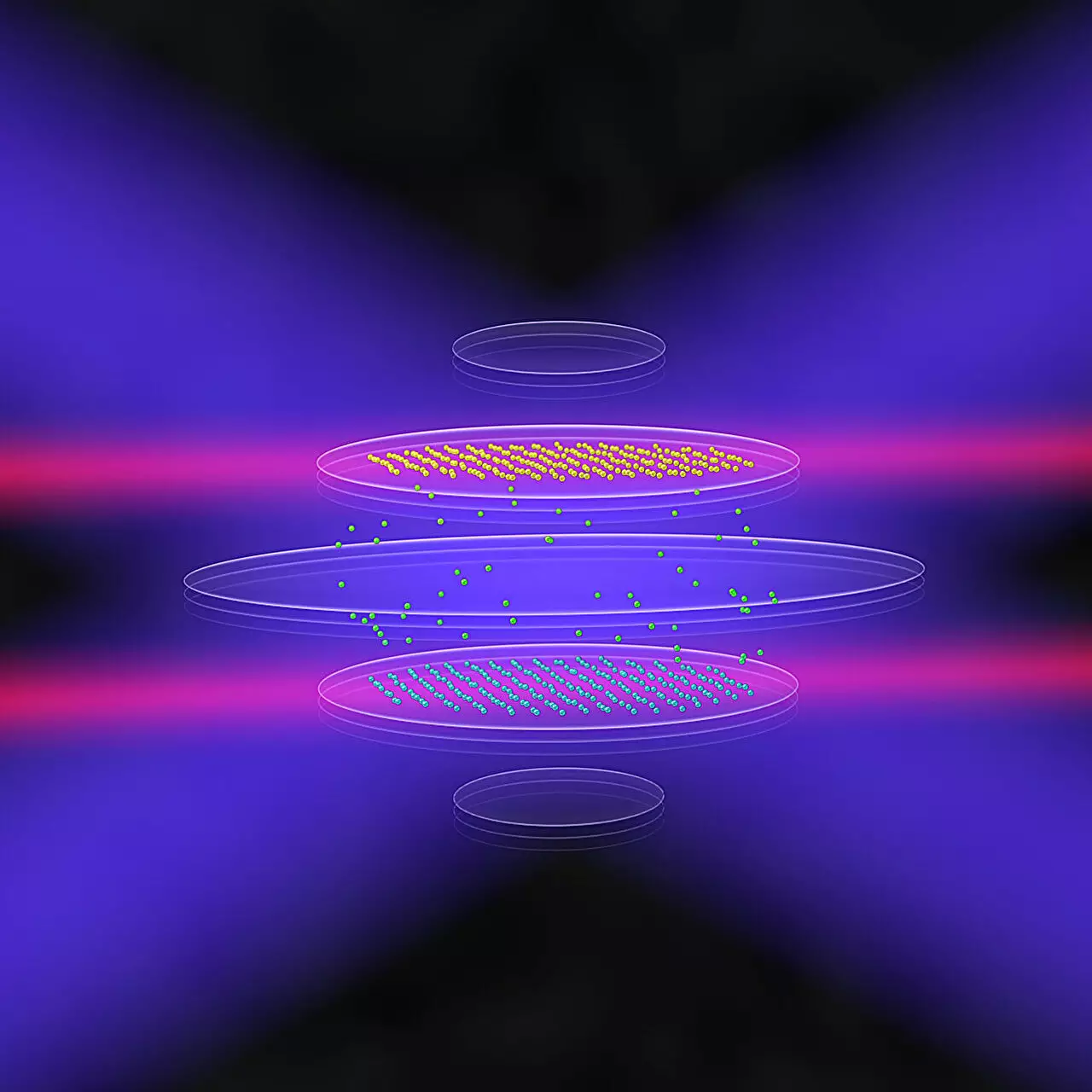In the realm of quantum technology, there exists a dynamic interplay between innovation and capability. Current quantum devices, particularly those utilizing trapped ions—charged atomic particles contained through intricate electric and magnetic fields—are at the forefront of this technological evolution. Despite their potential, these systems predominantly operate within one-dimensional chains or two-dimensional configurations, severely limiting their scalability and operational capacities. Researchers have long aimed to expand these systems into three-dimensional architectures, a goal that has remained obstinately elusive due to the challenges of maintaining stability and control as ions are arranged in more complex structures.
Recent collaborations among physicists from India, Austria, and the U.S. have sought to overcome these limitations. By cleverly altering the electric fields that trap the ions, they propose the creation of multilayer configurations that promise to revolutionize quantum computing and sensing technologies. The findings of this international team, including notable contributors from institutions like JILA and NIST, offer a glimpse into exciting new opportunities within quantum information science.
Innovative Insights from International Collaborations
The pursuit of advancing trapped-ion technology has seen significant advancements thanks to these collaborative efforts. As highlighted by NIST Fellow Ana Maria Rey, the ability to manage large ensembles of ions across distinct, separable layers not only enhances existing functionalities but also opens doors to explore phenomena that remain unattainable in purely two-dimensional systems. Concepts such as teleportation, topological chiral modes, and precise measurements of spatially varying fields are now on the horizon for quantum information scientists.
Central to this discussion is the concept of qubits—or quantum bits—formed through the manipulation of ions using laser and microwave pulses. These qubits are foundational to the processing of quantum information. The interactions between ions, strengthened by the Coulomb force, can lead to entangled states that reduce system noise and enhance measurement accuracy. This duality of functionality is what makes trapped ions a leading candidate for next-generation quantum computing solutions.
One of the innovations born from this collaboration involves the Penning trap—a specialized apparatus that holds ions in place for experimentation. Historically, Penning traps have been effective for arranging ions in simpler structures, either as flat two-dimensional layers or spherical configurations. The usual electric confinement strategies led to round formations because of how these traps manipulated the ions under a linear electric field.
However, by adjusting the trap’s electric field to create a more nuanced profile, researchers have been able to guide ions into bilayer crystal formations—two distinct layers of ions stacked one atop the other. This innovation was validated through extensive numerical simulations, suggesting stability under specific conditions and illustrating the potential for an even more complex multi-layered crystal arrangement. As Samarth Hawaldar, the lead author of the study, articulated, this pioneering strategy for three-dimensional structuring reflects a deliberate shift in experimental focus.
The implications of successfully transitioning ion trapping from two-dimensional to three-dimensional structures extend far beyond mere scalability. According to Dr. Athreya Shankar, these advancements usher in new capabilities for quantum information processing that 1D or 2D systems cannot easily realize. One particularly exciting prospect is the manipulation of quantum entanglement across larger sub-systems, which could significantly enhance the effectiveness of quantum hardware.
Moreover, the researchers emphasize the broader applications of bilayer structures in quantum simulations and sensing processes. For example, the interaction dynamics in bilayer ions can replicate complex behaviors observed in electrons under powerful magnetic fields, yet within fully controllable parameters. This capacity could prove essential in refining measurements of time, electric fields, and other critical physical quantities.
A Collaboration with a Vision for the Future
Beyond the technical advancements, the collaborative aspect of this research fosters a vital exchange of ideas and methodologies between teams in different countries. As the quantum technology landscape evolves, synergies like these become increasingly important in unlocking the full potential of innovations ranging from quantum computing to sophisticated sensors.
As the international scientific community aims to reshape the quantum landscape, the move toward multilayered structures in trapped-ion systems stands as a pivotal development. By enhancing scalability and exploring previously inaccessible quantum states, these innovations could lead to breakthroughs that profoundly impact our understanding and application of quantum mechanics. The road ahead is charged with potential, and the pursuit of knowledge in this field could very well redefine the technological paradigms of tomorrow.


Leave a Reply